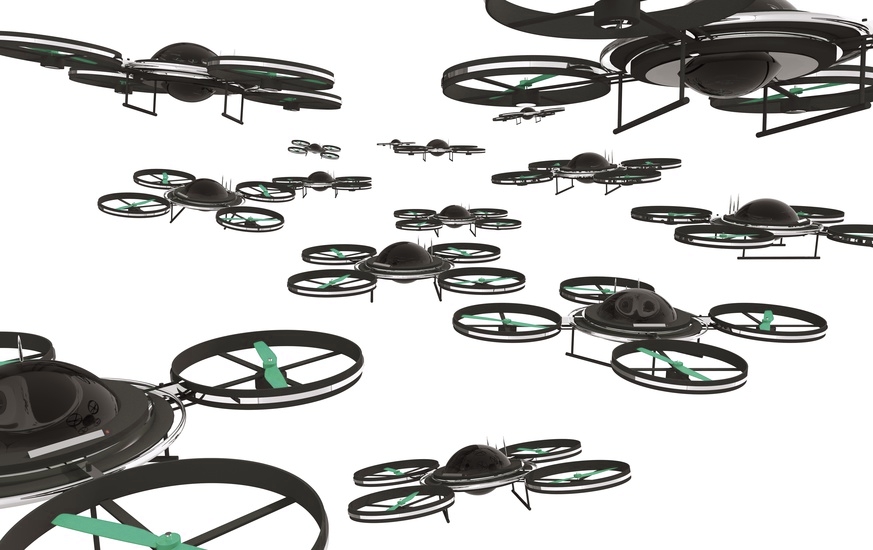Will Robots Take Over By Swarm?
Daniel Faggella / Op Ed
Posted on: November 22, 2015 / Last Modified: November 22, 2015

In popular culture, the term “swarm robotics” most likely conjures images of battles from “Star Wars” movies. While those images may be rooted in science fiction special effects, according to Dr. James McLurkin, swarm robotics engineer and assistant professor at Rice University’s Department of Computer Science, swarm robots are a present reality.
McLurkin cited Amazon’s use of robots in its distribution centers to pull items and deliver them to a waiting shipping box. He believes swarm robots are better suited for tasks that can be spread over a large geographic area and broken down into many parallel operations, such as search and rescue or mapping.
“Robots are best at tasks that are too dangerous for people to do. You just need the three Ds of robotics; dangerous, dirty or dull. Any task that is one of the three Ds is one you want robots to do,” McLurkin said. “My work is all about the fourth D, which is “distributing.” We want to understand how to take tasks and break them up into lots of small tasks.”
Noting the military’s interest in the search-and-rescue applications, McLurkin used the example of a commercial airliner crashing in the ocean as an ideal use of swarm robotics. Searching through wreckage on the ocean floor is a task humans simply can’t do, he said. A large group of robots looking through the wreckage, however, would be perfectly suited for the task.
Another area where swarm robots might be of good use is in large-scale assembly, McLurkin added. A task requiring a large population of robots to move objects of assorted sizes in different locations would be just the beginning, however.
“Our recent work has robots playing past their environments, so they can understand they are manipulating an object and are dragging it through the door. The robots ahead of the grabbing group have been alerted to prepare to rotate the object to get it through the door, all those things work together,” McLurkin said. “The way we do this is using distributed algorithms… distributed computation so there’s no big giant robot in charge.”
While McLurkin can envision swarm robotics at work in many other different environments, the hurdle researchers still face is sensing and perception. While sensing is as easy as strapping on a camera to a robot to measure and sense objects, having the robot recognize what it’s looking at is a bigger challenge. Understanding perception, he believes, is the same as understanding artificial intelligence. Given that, McLurkin says it’s still unclear when a single robot, much less a swarm of robots, will be released into the unstructured environment where humans navigate so effortlessly.
When swarm robots are perfected, McLurkin says they will still need to operate in a controlled environment, such as the Amazon distribution center. The facilities are built specifically to make the robots’ jobs easier and, by making the robot’s job easier, you make the humans’ jobs easier too, he added.
The four walls of a warehouse won’t be the only environment where swarm robots will be put to use. In agriculture, you design your fields and design the layout of your crops and subdivisions on your field in a controlled, structured environment. Robots can sense very small variations in the field. “They can look at historical data about the yields and put down fertilizer or insecticide only when it’s needed,” McLurkin said. “You end up doing basically an inkjet printer across your field. You send out your swarm of 30 drones, they spread out over your fields, they drop down to get some good pictures and then that data can provide a daily micro-crop report.”
But that’s not the first place most of us will encounter swarm robot technology in the future, McLurkin said. He predicts the first mass application of swarm robots will come on four wheels, not giant flying insects. And the pieces are already in place.
“The first place most people will see swarm technology in the real world is in their cars. Cars will understand where traffic is and what’s going on in the road, and be able to decide for themselves if we should get off the highway because there’s an accident or slow down if the road ahead is bad,” McLurkin said. “All the parts are already in the most of the cars we drive. They have radios, they have computers and they have sensors. What’s missing is the software to pull it all together. That’s the easy part. The hard part is convincing the lawyers it’s going to (sic) be okay.”
About the Author:
 Dan Faggella is a graduate of UPENN’s Master of Applied Positive Psychology program, as well as a national martial arts champion. His work focuses heavily on emerging technology and startup businesses (TechEmergence.com), and the pressing issues and opportunities with augmenting consciousness. His articles and interviews with philosophers / experts can be found at SentientPotential.com
Dan Faggella is a graduate of UPENN’s Master of Applied Positive Psychology program, as well as a national martial arts champion. His work focuses heavily on emerging technology and startup businesses (TechEmergence.com), and the pressing issues and opportunities with augmenting consciousness. His articles and interviews with philosophers / experts can be found at SentientPotential.com
Related articles
- Unanimous AI CEO Dr. Louis Rosenberg on Human Swarming
- Human Swarming and the future of Collective Intelligence









